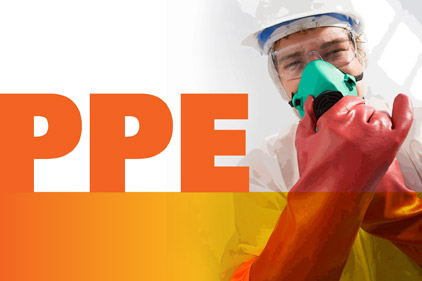 San Diego CA -- It’s clear from spending days on the exhibit floor of the National Safety Congress and Expo held here in San Diego that your father’s PPE company is so last century.
San Diego CA -- It’s clear from spending days on the exhibit floor of the National Safety Congress and Expo held here in San Diego that your father’s PPE company is so last century.
For decades, from the dawn of OSHA in 1971 through the 1980s and ‘90s, PPE companies and PPE distributors simply sold on the basis of “OSHA says” you need ear plugs, safety glasses, hard hats, steel-toe boots, respirators, fall protection and so on. Regulations and enforcement drove PPE demand. To be sure, it still does and always will to an extent.
A crowded field
But in many ways that was then, this is now. In 2014, you could say the PPE marketplace in the U.S. is something of a tight, confined space. Traditional PPE markets such as auto, steel and heavy manufacturing have gone global, leaving a domestic PPE market that grows at a very moderate clip, perhaps 2-3 percent this year. At the same time, you have more PPE players than ever. Sure there has been consolidation. But scores of booths at the Safety Congress and Expo are from China, Korea and other parts of Asia. New players continue to come into the FR clothing market, the glove market. PPE technology is imported from the consumer sportswear business, athletic uniforms, the military and law enforcement. This “cross pollination” of PPE R&D has gone on for years, but the number of PPE manufacturers has not shrunk in alignment with shrinkage in the U.S. manufacturing base. So you have a crowded PPE field.
To stand out from the crowd, PPE companies are doing a number of things. They are much more into services than ever. Take PPE usage training. Vendors have opened training facilities, particularly for fall protection, across the country. PPE companies are pumping up their brand image with more consumer-type advertising and social media campaigning – one reason for the record number of exhibitors at this year’s Congress and Expo.
"You have to do more"
“We just can’t beat each other up on pricing,” one vendor told ISHN. He remains anonymous because ISHN has conducted numerous vendor interviews at the show with the understanding that the information shared is “for background only,” and sources do not expect to be quoted. “So it’s got to be about more than pushing commodity products like gloves and ear plugs. It’s about positioning your company, about how you add value to the commodity product. It’s about solving customers’ safety problems, not pushing product anymore. You have to do more than that.”
Numerous PPE companies and distributors are beefing up their position with customers by emphasizing subject matter expertise: hiring Certified Safety Professionals, creating safety specialist sales forces, authoring non-commercial white papers and web content blogs and articles and tech briefs that make it easier for safety pros, their customers, do to their jobs. “We want to know what the safety problems are that our customers face,” said one PPE vendor. “When we ask, it doesn’t take long at all for them to tell us their day to day reality. Then we customize solutions for them.”
Content, content, content
Call it consultative selling, or customer-centric selling. There are all sorts of business buzzwords. One that keeps popping up at the expo is “content,” “content,” “content.” PPE vendors want to position themselves with customers as authorities on PPE audits, training, OSHA requirements, new technology, and new applications, such as putting RFID tags on PPE to be able to track employee movements and be alerted to “man down” situations.
Check out PPE vendor and distributor web sites. You’ll find many are much richer in content, non-commercial practical checklists, tech briefs, FAQs, Ask the Expert columns, white papers, and links to EHS resources. You also find “content” on non-PPE subjects such as how to build and sustain safety cultures and employee engagement.
“What you offer, market and communicate around a PPE product is almost as important now as the product itself,” said one vendor. One example: some PPE manufacturers are becoming more talkative about research and development, and shining a light on their innovation labs and “centers of technical expertise.” Scientists, R&D directors and chief technology officers are penning articles, giving webinars and workshop presentations and press interviews, and raising their profiles. It’s another way for PPE companies to separate from the pack in a crowded marketplace.



